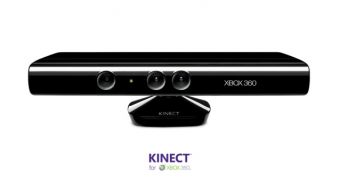A new patent forwarded by Microsoft to the U.S. Patent and Trademark Office hints at a rather disturbing new use for the Kinect sensor, which might be employed to count the number of people watching a TV and then charge them money for viewing a type of “pay-per-viewer” content.
Microsoft has pledged to make the Kinect irresistible to Xbox 360 owners by using it in all sorts of games and by implementing support for the sensor in different applications.
One new use for the Kinect, according to a patent that’s now been made public by the USPTO, via Kotaku, would be to effectively monitor users in order to determine their number and approximate ages.
The patent, called Content Distribution Regulation by Viewing User, describes the use of a sensor, most probably the Kinect, to count people and regulate the transmission of a pay-per-viewer type of content.
“The technology, briefly described, is a content presentation system and method allowing content providers to regulate the presentation of content on a per-user-view basis. Content is distributed to consuming devices, such as televisions, set-top boxes and digital displays, with an associated license option on the number of individual consumers or viewers allowed to consume the content,” the patent reads.
“The limitation may comprise a number of user views, a number of user views over time, a number of simultaneous user views, views tied to user identities, views limited to user age or any variation or combination thereof, all tied to the number of actual content consumers allowed to view the content.”
In order to regulate the viewing of this content, Microsoft offers to monitor users while they watch it and take the necessary actions when the number of viewers is surpassed.
“In one embodiment, a license manager on the consuming device or on a content providers system manages license usage and content consumption. The users consuming the content on a display device are monitored so that if the number of user-views licensed is exceeded, remedial action may be taken.”
While this patent might not actually be employed by Microsoft itself, it does hint at a rather scary use for Kinect that, hopefully, won’t see the light of day.

 14 DAY TRIAL //
14 DAY TRIAL //